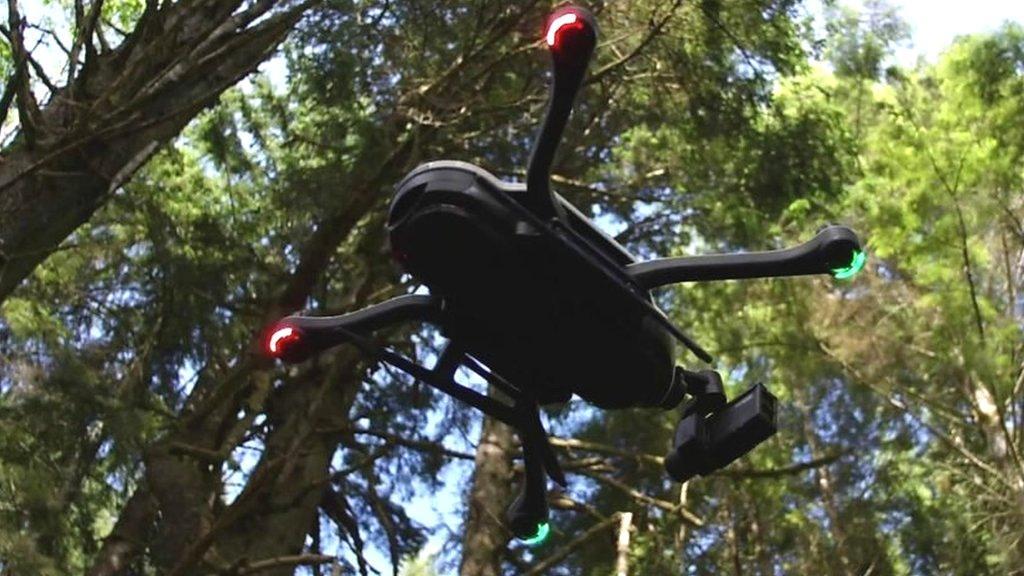GoPro or go home! Crunch time for the 'mad billionaire'
- Published
- comments
Watch: Dave Lee gets hands on with GoPro's Karma quadcopter
The GoPro story started when Nick Woodman bodged together a camera, strapped it to his hand with a rubber band and went surfing.
That was in 2002. Within 10 years, that idea had made him a billionaire, and just a couple of years ago, the highest paid chief executive in America.
At an event in the stunning Squaw Valley resort in California, which overlooks Lake Tahoe, Woodman leapt on to the stage carrying, quite literally, the weight of expectation on his shoulders.
In his backpack, the Karma - GoPro’s first ever drone. A device beaten to market by several other companies, but one that was eagerly anticipated all the same.
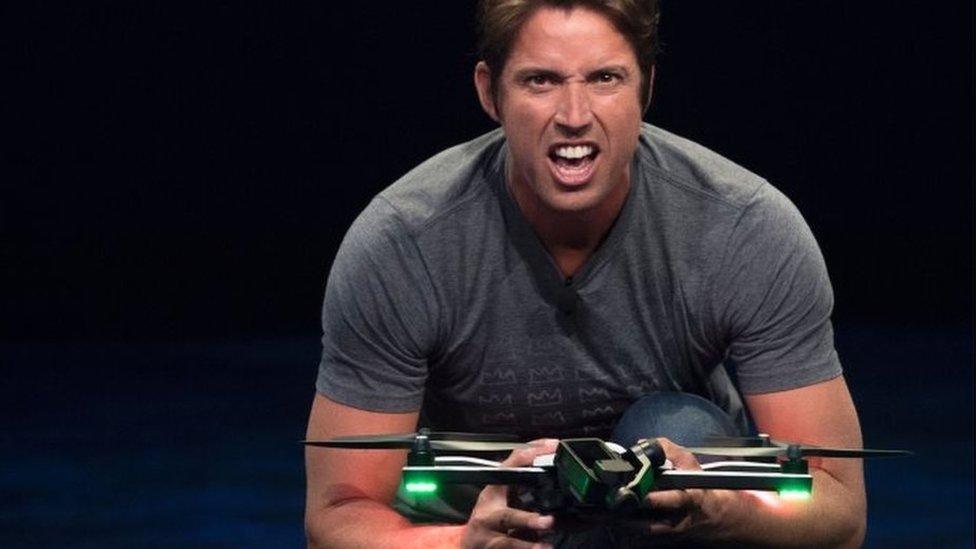
Nick Woodman put on an energetic performance at Karma's launch
As he unveiled it to his audience - a mixture of GoPro staff, athletes and journalists - the crowd’s whoops made the atmosphere at the last Apple launch seem like a genteel afternoon of county cricket.
They were cheering for what is the first significant upgrade to GoPro hardware for two years. The top-of-the-line Hero5 Black and its dinkier brother the Hero5 Session both come with voice activation, meaning a holler of “GoPro, start recording” has the obvious effect.
The introduction of electronic image stabilisation takes the edge off juddery bike rides - and the sound is improved too. As winds battered me during a trial run, at times the microphones built into the Hero5 Black outperformed the broadcast-quality lapel ones we were using for filming.
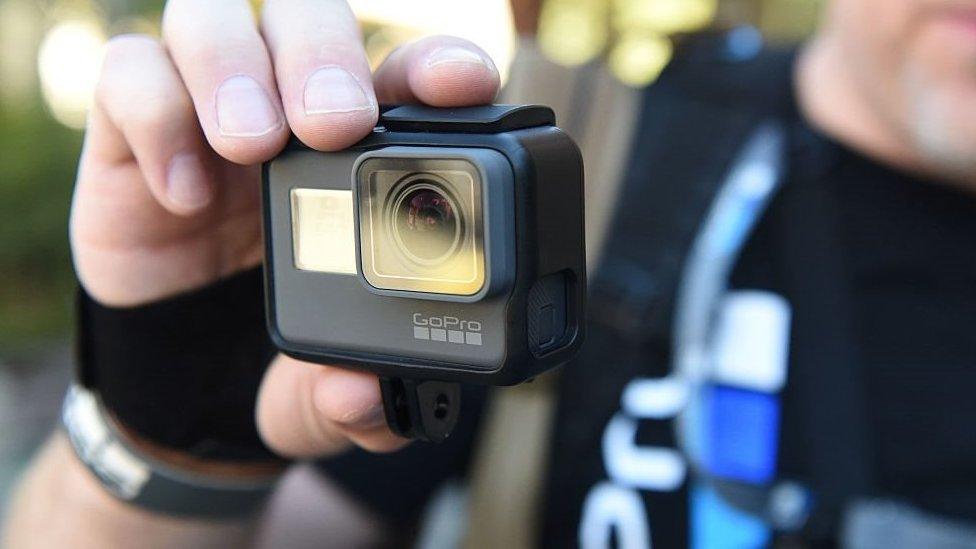
The Hero5 Black camera can be triggered by voice commands in seven languages
The Karma drone costs $799 (£615), without a camera. If you decide to get it bundled with the Hero5 Black camera, it will cost a tidy $1,099, or you can get it with the Hero5 Session for $999. A lot, in other words.
But the key selling point - and one which got a bigger cheer here than the drone itself was the drone’s detachable gimbal.
A gimbal, if you’re not a camera nerd, is a device used to stabilise a camera but adding a counter balance. It means, as you run about with the camera - or strap it to a drone - it won’t shake and bounce around.

Nick Woodman unveiled a new version of the Session camera - the earlier version had struggled to sell until a price cut
Demo footage shown on stage was impressive, though I’d wait to see more shots from non-GoPro affiliated sources before making a final verdict.
Excitement here wasn’t exactly in short supply. But many sensed it could be covering a nervousness, because unlike the first 13 years of its life, where money kept pouring in, GoPro has had a real stinker of a 2016.
It’s yet to turn a profit this year - with revenues dropping almost 50% in some quarters compared with 2015.
Watch: GoPro shows off its fold-up Karma drone
Is Woodman feeling the pressure?
“Yes,” he told the BBC.
“But not because of the stock price. We’re transparent. Candid with our customers and our investors about what our vision is.”
Stock in GoPro is down 80% compared with its 2014 heyday. It went up briefly on this latest news as it was being announced, only to drop again when the prices were revealed.
Woodman has promised investors a return to profitability in the tail end of 2016. I asked him if this was still on the cards. “Yes,” came the terse reply.
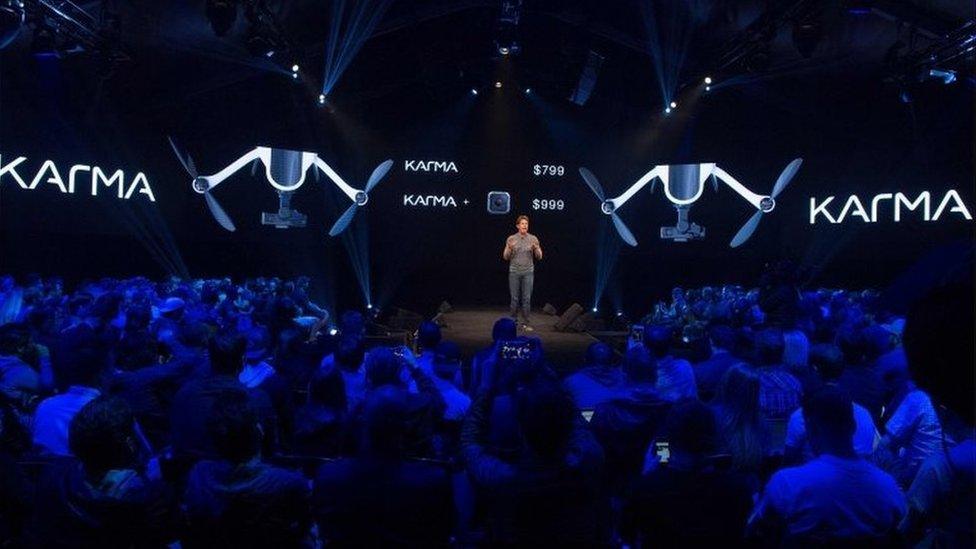
GoPro posted losses totalling $233.7m for the last three quarters
“These products are the best products we’ve ever made,” he added.
His logic is that the Hero4 cameras, which are two years old, are still selling pretty well. A refresh, big media launch and a buzz of new tech should, he believes, see GoPro rocket its way through the Christmas season.
At the top of Squaw Valley, where you can look down on both California and Nevada at the same time, everything in the world seems perfect.
And at that altitude, you’ll believe anything can happen - especially when it’s delivered by Woodman, who‘s the sort of person who runs into your bedroom at 07:00 on a Saturday, opens the curtains and demands you seize the day.
His enthusiasm is infectious. He’s clearly as “pumped” - as he’d say - about GoPro today as he was back on that beach in 2002.
But he knows GoPro has a tough Christmas ahead as it battles in a market it essentially created but has since become crowded.
The purists and elite athletes of the world love GoPro, even with its fiddly imperfections and at times heftier price tag than other options. GoPro has sold the lifestyle to the type of people who voluntarily throw themselves into danger.
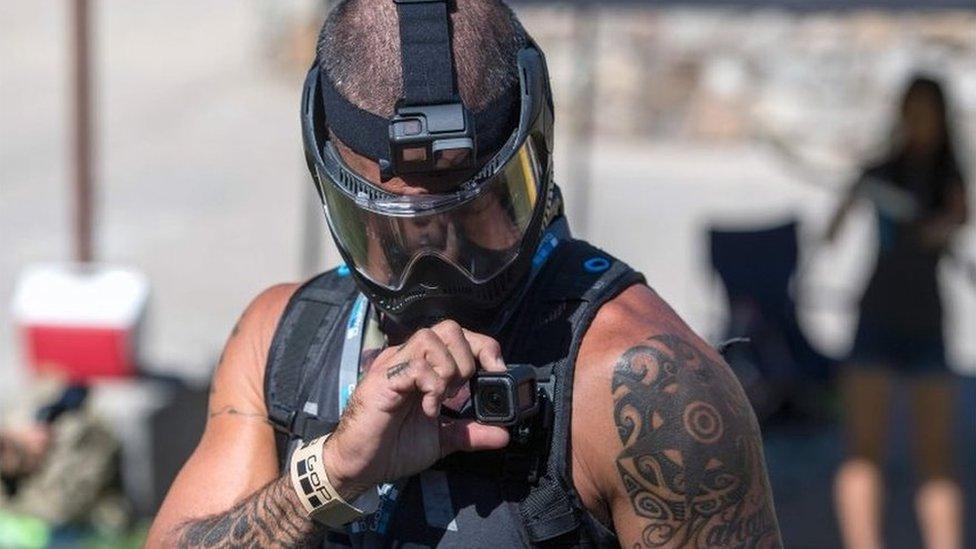
GoPro invited dozens of members of the press and analysts to a launch event at Squaw Valley, California
The problem is, that group alone isn’t enough to give GoPro the success it needs.
The real task at hand is to convince the doting parents of the world to not use their phone and instead shell out on a camera. That’s getting harder and harder.
Follow Dave Lee on Twitter @DaveLeeBBC, external and on Facebook, external
- Published19 September 2016

- Published20 September 2016
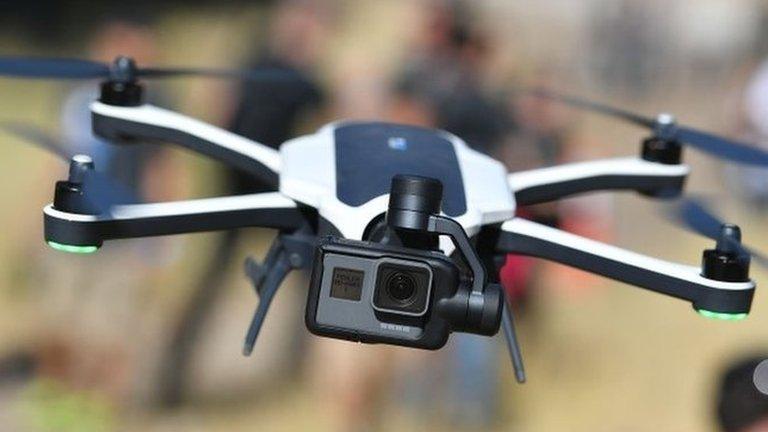
- Published19 September 2016
